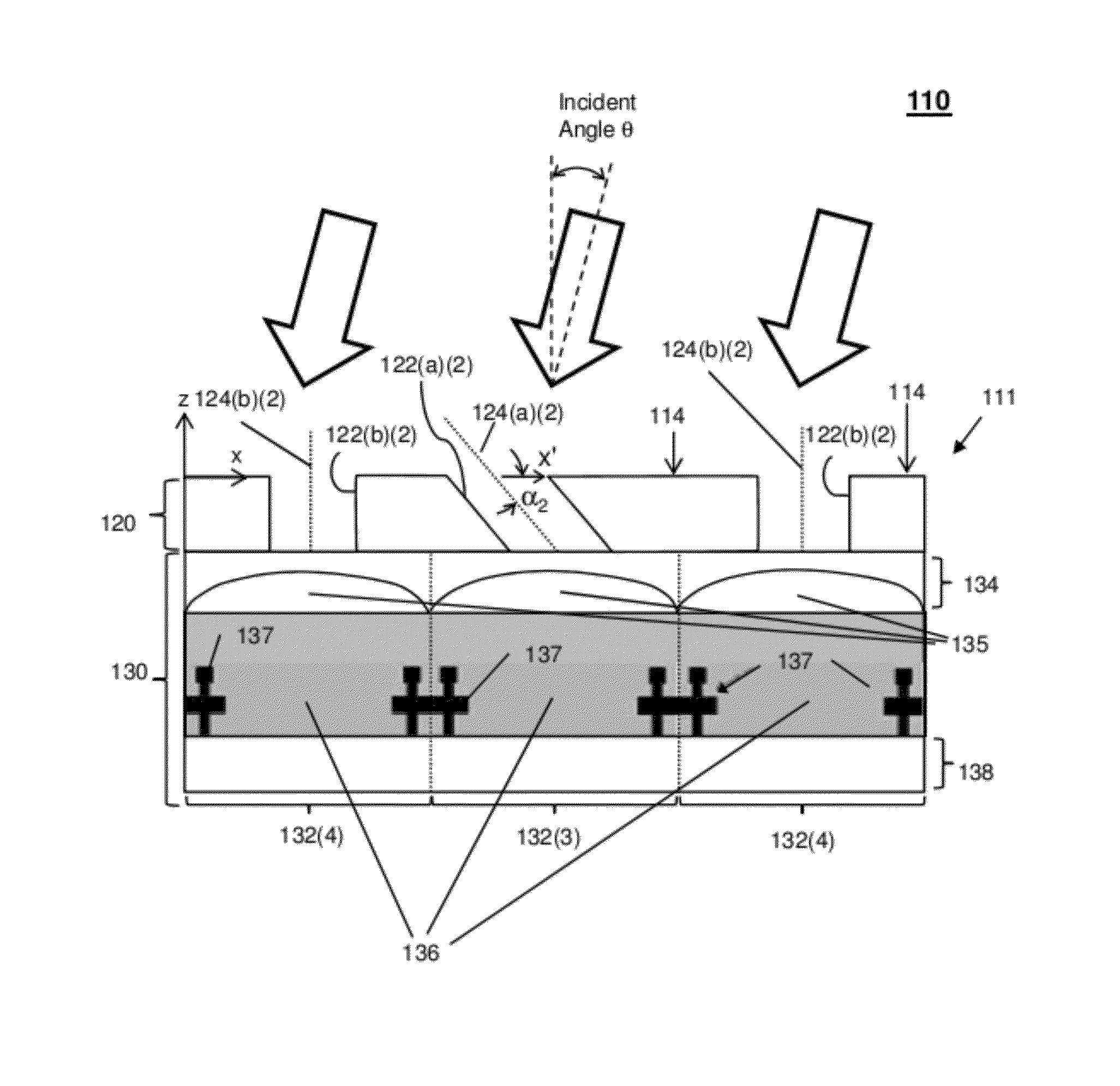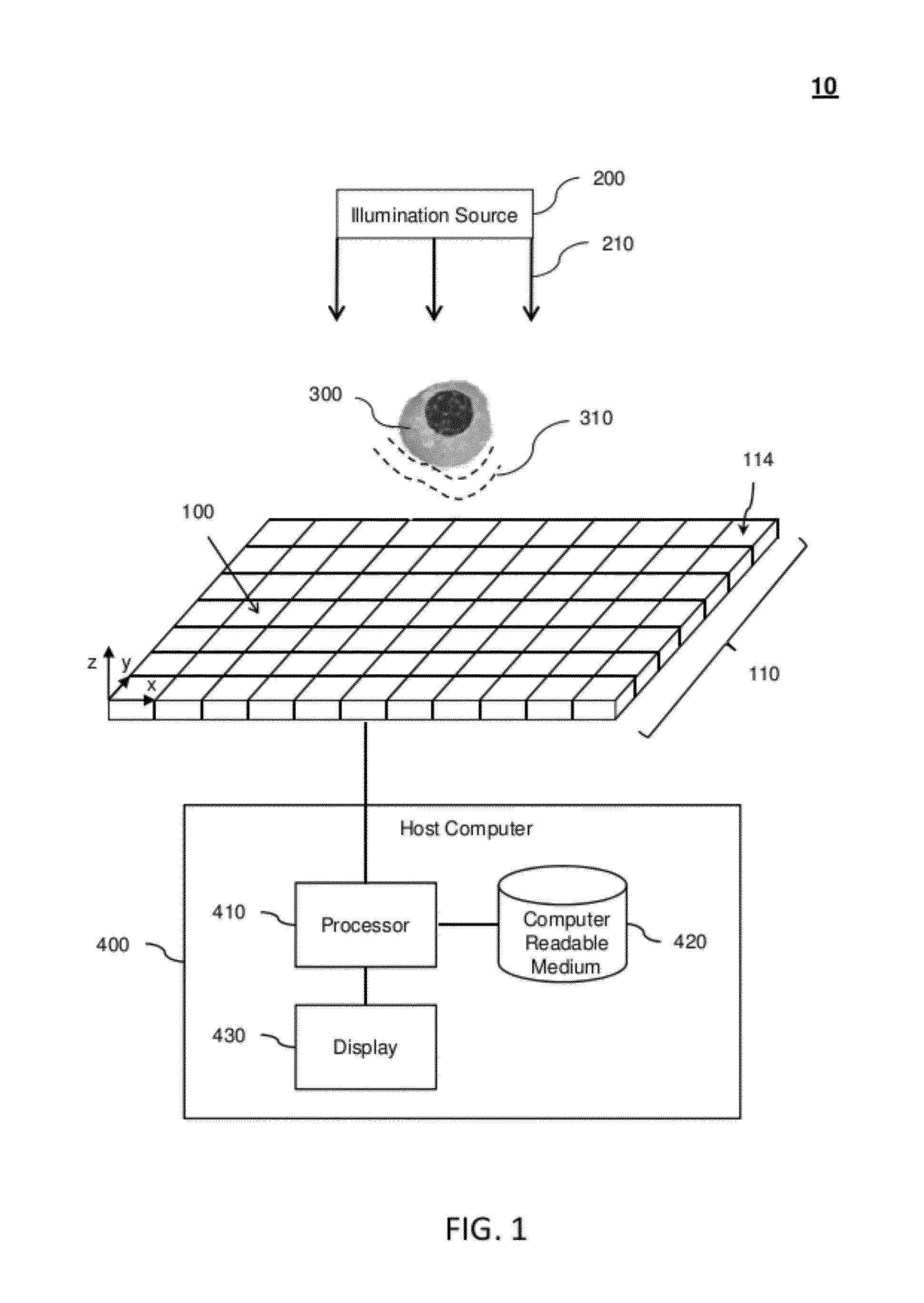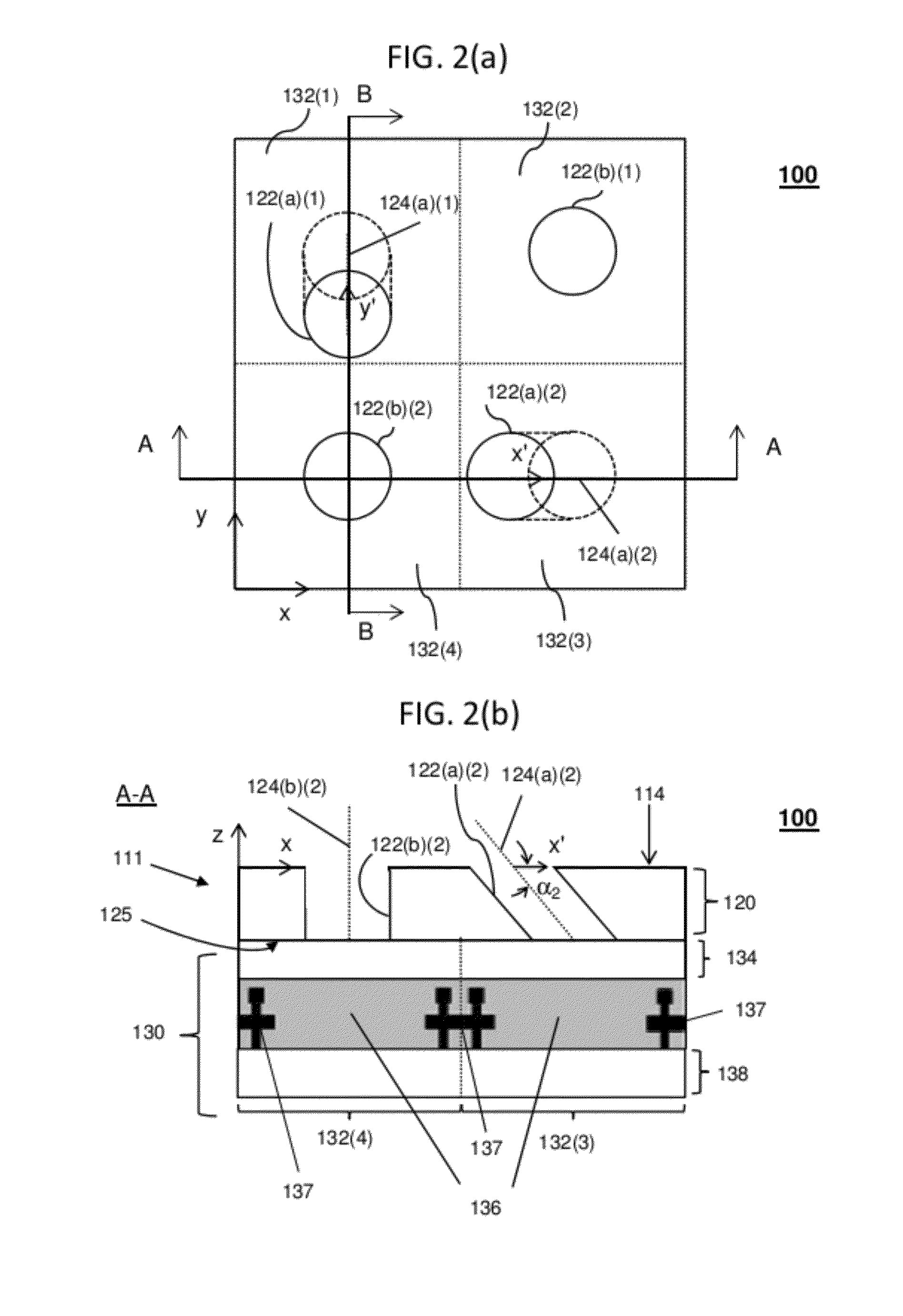Light-field pixel for detecting a wavefront based on a first intensity normalized by a second intensity
a light-field pixel and wavefront detection technology, applied in the field of wavefront (phase gradient) detection devices, can solve the problems of difficult extraction of optical phase distribution associated with microscope images, high cost and relatively high maintenance of phase microscopes, and the majority of advanced methods contain significant optical elements, so as to achieve a higher transmission gradient
- Summary
- Abstract
- Description
- Claims
- Application Information
AI Technical Summary
Benefits of technology
Problems solved by technology
Method used
Image
Examples
Embodiment Construction
[0031]Embodiments of the present invention will be described below with reference to the accompanying drawings. Embodiments include a light-field pixel that can detect an image wavefront induced by the presence of an object in a light field. The light-field pixel includes an aperture layer covering a light detector layer with light detecting elements (e.g., image sensor pixels). The aperture layer has an outer surface. The light-field pixel of embodiments includes four apertures over four corresponding light detecting elements. Two of the apertures are non-conventional apertures and two are conventional apertures having a longitudinal axis normal to an outer surface. The non-conventional apertures are designed to generate a higher gradient of transmission at normal incidence than the conventional apertures which have a gradient close to zero at normal incidence. In one design, a light-field pixel uses a slanting-aperture based wavefront imaging technique. A light-field pixel using t...
PUM
 Login to View More
Login to View More Abstract
Description
Claims
Application Information
 Login to View More
Login to View More - R&D
- Intellectual Property
- Life Sciences
- Materials
- Tech Scout
- Unparalleled Data Quality
- Higher Quality Content
- 60% Fewer Hallucinations
Browse by: Latest US Patents, China's latest patents, Technical Efficacy Thesaurus, Application Domain, Technology Topic, Popular Technical Reports.
© 2025 PatSnap. All rights reserved.Legal|Privacy policy|Modern Slavery Act Transparency Statement|Sitemap|About US| Contact US: help@patsnap.com



